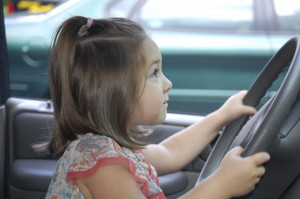 As wonderful as they are, they’re not always perfect little angels. We have watched with disappointment how certain devilish behaviours are being passed down from older to younger child. Big sister Cassidy, for example, has from time to time shown unpleasant intolerance of her little sister, Morgan. Instead of learning from how awful Cassidy has made her feel, Morgan has started to mirror some of those same unpleasant intolerance behaviours with her little brother.
As wonderful as they are, they’re not always perfect little angels. We have watched with disappointment how certain devilish behaviours are being passed down from older to younger child. Big sister Cassidy, for example, has from time to time shown unpleasant intolerance of her little sister, Morgan. Instead of learning from how awful Cassidy has made her feel, Morgan has started to mirror some of those same unpleasant intolerance behaviours with her little brother.
Of course, it all probably originated with how their mom and dad have behaved towards each other, more specifically dad towards mom. I have been very slow to learn about how my own intolerances and tone can impact on those around me. I shudder to think about how many of my less-than-optimal behaviours and mannerisms are being picked up by my children!
I am thankful to retired police officer, Bob Sherman, for this week’s column topic. He e-mailed me with the suggestion that I ask my readers: “At what age do youth generally begin to learn to drive?”.
Bob’s career in policing has given him a compelling perspective on driver safety. He noted in his e-mail: “In 31 years of policing, I’ve been to a lot of crashes, many of them fatals. People don’t realize that their car is a little tin can, easily made into a wad of scrap”.
How would you respond to Bob’s question? Does your mind immediately turn (like mine did) to age 16 when our youth may begin British Columbia’s graduated licensing program?
Bob suggests a much different answer; one that shows an important insight into our learned behaviours, recognizing the way they are passed down like the unpleasant intolerance passed down from me through my children.
British Columbia’s graduated licensing program is outlined on ICBC’s web site, noting: “By going through graduated licensing (GLP), you’ll learn the skills and attitudes that will help you become a safe and confident driver”. Bob suggests that a much more impactful classroom of driver learning is in our own vehicles and that our “student” children start learning not at age 16 but more in the range of age 4 or 5.
Bob says: “Children learn by observing. Their minds are like sponges. We can start making better drivers by being great examples”.
What lessons do you teach your children in your rolling classroom? Do you model patience or impatience with other drivers? Do you teach a lesson that “speeding is ok when you’re in a rush” or that safety always comes first? Do you model uncompromising attention to the important task at hand or do you teach your “students” that it is ok to give in to such distractions as having cell phone conversations, eating and doing make-up?
I am somewhat embarrassed not to have independently realized this very important reality of driver education. Thank you, Bob, for cluing me in and encouraging me to share this important message. This is another way that we can all work together to make our roads safer. Please, let all of us be careful to model good driving behaviours and attitudes for our children.
One last word for Bob, who endured a career of parents instilling in their children a fear of police officers. Rather than teach our children that police officers are “out to get us”, how about share the reality that they are out to help us and use this as an example of that.
![]() Published February 6, 2014 in the Kelowna Capital News
Published February 6, 2014 in the Kelowna Capital News
![]() Posted February 6, 2014 on Kelowna Capital News Online
Posted February 6, 2014 on Kelowna Capital News Online

0 Comments